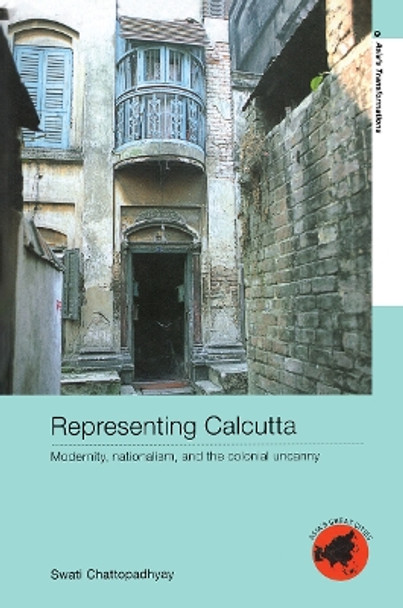Description
Representing Calcutta is a spatial history of the colonial city, and addresses the question of modernity that haunts our perception of Calcutta. The book responds to two inter-related concerns about the city. First is the image of Calcutta as the worst case scenario of a Third World city -- the proverbial 'city of dreadful nights.' Second is the changing nature of the city's public spaces -- the demise of certain forms of urban sociality that has been mourned in recent literature as the passing of Bengali modernity. By examining architecture, city plans, paintings, literature, and official reports through the lens of postcolonial, feminist, and spatial theory, the book explores the conditions of colonialism and anti-colonial nationalism that produced the city as a modern artefact. At the centre of this exploration resides the problem of 'representing' the city, representation understood as description and narration, as well as political representation. In doing so, Chattopadhyay questions the very idea of colonial cities as creations of the colonizers, and the model of colonial cities as dual cities, split in black and white areas, in favour of a more complicated view of the topography.
About the Author
Swati Chattopadhyay is a Professor in the Department of History of Art and Architecture, University of California, Santa Barbara, USA. She is an architect and architectural historian, specializing in modern architecture and the cultural landscape of British colonialism.
Reviews
'The author ably juggles racial, gendered, moral, architectural, literary and artistic geographies to craft a highly innovative, scholarly and stylishly executed study ... on a personal note, as the granddaughter of a suburban Calcutta architect I particularly welcome this book.' - Social & Cultural Geography
'Representing Calcutta provides a new and exciting look into the burgeoning capital of the Raj in the early nineteenth century. Chattopadhyay powerfully weaves together architecture, space, and culture to describe a city of 'blurred boundaries', in which British and Bengali each play a part in the creation of a distinctively colonial culture. From the layout of the bungalow to the ideas of Bengali reformers, Chattopadhyay gives us a living Calcutta in place of the usual stereotypes derived from Kipling and contemporary image-making'
- Thomas R. Metcalf, Professor of History Emeritus, University of California, Berkley'Representing Calcutta offers a wide ranging and fluent interpretation of the literature, art, and urban landscape of the colonial city that uses each to illuminate and sometimes to undercut the others. Chattopadhyay's great talent is to lay out large issues in concrete ways, creating a vivid and memorable portrait of colonial Calcutta's life and landscape and offering a fresh perspective on one of the world's great cities.' - Dell Upton, School of Architecture, University of Virginia
'The author ably juggles racial, gendered, moral, architectural, literary and artistic geographies to craft a highly innovative, scholarly and stylishly executed study ... on a personal note, as the granddaughter of a suburban Calcutta architect I particularly welcome this book.' - Social & Cultural Geography
Book Information
ISBN 9780415343596
Author Swati Chattopadhyay
Format Hardback
Page Count 330
Imprint Routledge
Publisher Taylor & Francis Ltd
Weight(grams) 703g






